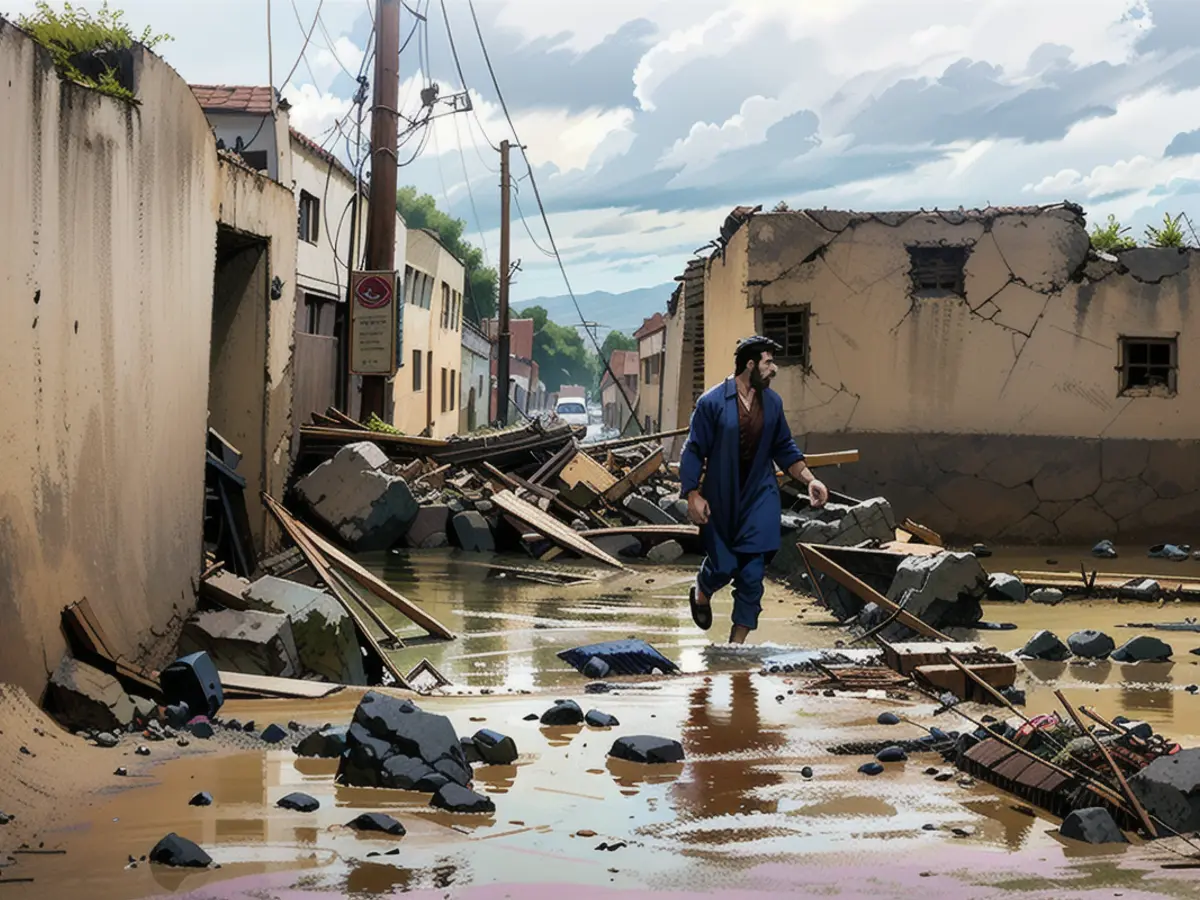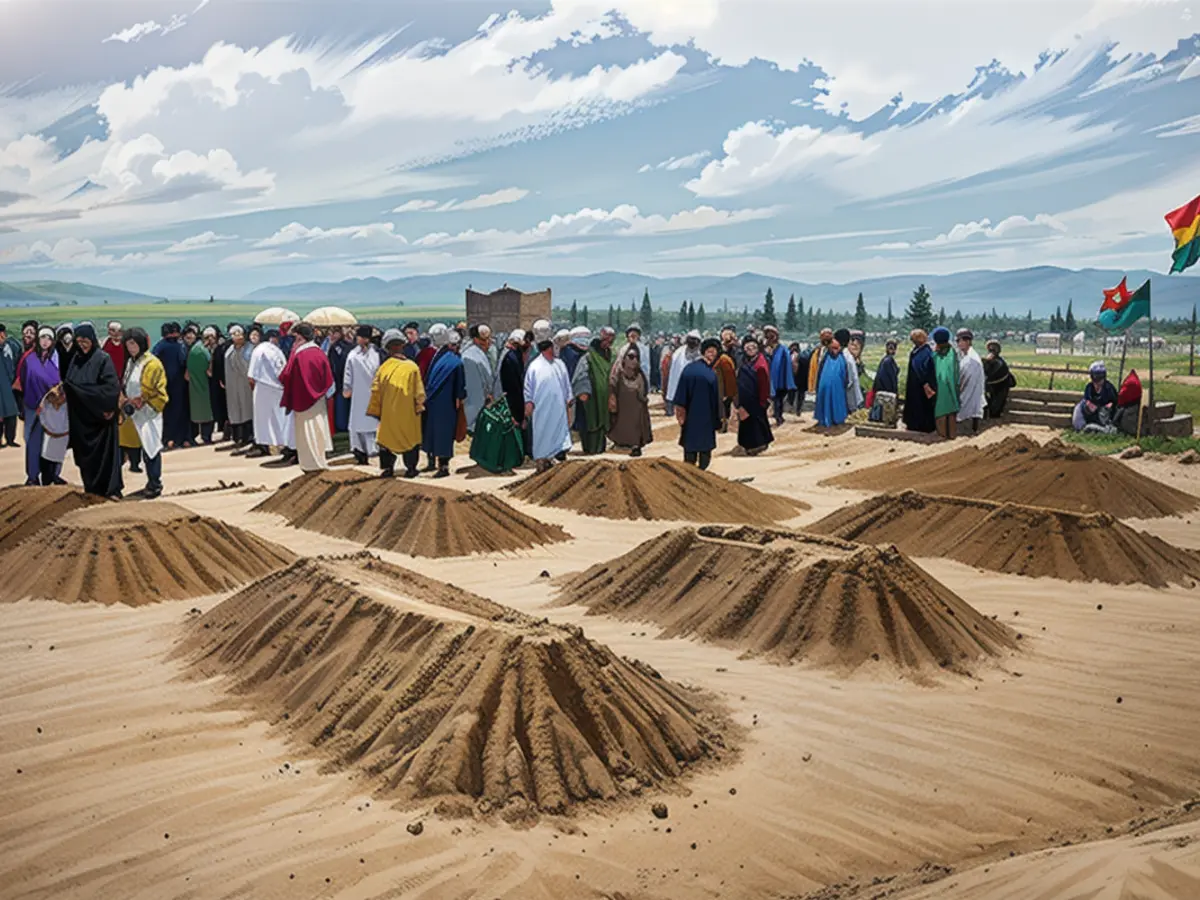Flash floods in Afghanistan claim the lives of over 200 victims, causing a potential humanitarian crisis.
In the northern regions of Afghanistan, including Badakhshan, Ghor, Baghlan, and Herat, there have been severe floods that have caused significant damage. As per a statement released by the IOM, over 2,000 homes have been destroyed, and the death toll is expected to rise further.
The IOM is currently providing support on the ground and has mentioned that the number of deaths is likely to increase.
According to the International Rescue Committee (IRC), the flood damage has stretched across seven provinces. They estimate that at least 250 people have lost their lives, while thousands more are stranded without access to essential services.
IRC's Afghanistan Director, Salma Ben Aissa, expresses her concern about the situation, saying, "These recent floods have created a critical humanitarian crisis in Afghanistan, which was already facing challenges from a series of earthquakes at the beginning of this year and previous severe flooding in March."
"Families have been devastated, losing loved ones, and their livelihoods have been destroyed," she added.
On Saturday, footage from Reuters showed mourners burying the deceased in the province of Baghlan. Gulbudeen, a man witnessing the burial, revealed that he lost five family members in the floods. "I lost two sons, two daughters, and their mother due to these devastating flash floods. We were standing at a safe distance but could not help them; the flood eventually took their lives," he said.

In the village of Laqayi, also in Baghlan province, locals were trying to clean the rivers outside their homes. Footage from AFP showed villagers attempting to navigate through the deep muddy pools, which seem to have caused extensive damage to homes.
The ruling Taliban expressed their condolences for the loss of life caused by the floods in a statement released by their spokesperson Zabihullah Mujahid on Saturday. "Unfortunately, hundreds of our fellow citizens have perished in these disastrous floods, while many others have been injured. Furthermore, the flood has damaged an incredible number of residential properties, resulting in heavy financial losses," Mujahid said.
The Taliban have instructed their interior ministry, the ministry of disaster management, and local officials to "utilize all possible resources" to rescue the stranded, recover dead bodies, and provide medical attention to the injured.
The flash floods are just the latest in a series of natural disasters that the region has had to face. In April, unseasonal rain and floods led to over 100 deaths in Afghanistan and Pakistan, as per authorities, with more than 600 animals also perishing. There were also flash floods in July, which swept away numerous individuals, fewer than three months before a 6.3 magnitude earthquake hit western Afghanistan, claiming the lives of thousands.

Read also:
- This will change in December
- Dikes withstand water masses so far - Scholz holds out the prospect of help
- Fireworks and parties ring in 2024 - turn of the year overshadowed by conflicts
- Attacks on ships in the Red Sea: shipping companies avoid important trade route
The extent of the flood damage in Afghanistan has not been contained within the country's borders, as the International Rescue Committee (IRC) has reported flood-related deaths in at least seven provinces. Furthermore, the Asian Disaster Response Network (ADRN) has expressed its concern about the possible impact of these floods on neighboring countries in Asia.
Source: edition.cnn.com







